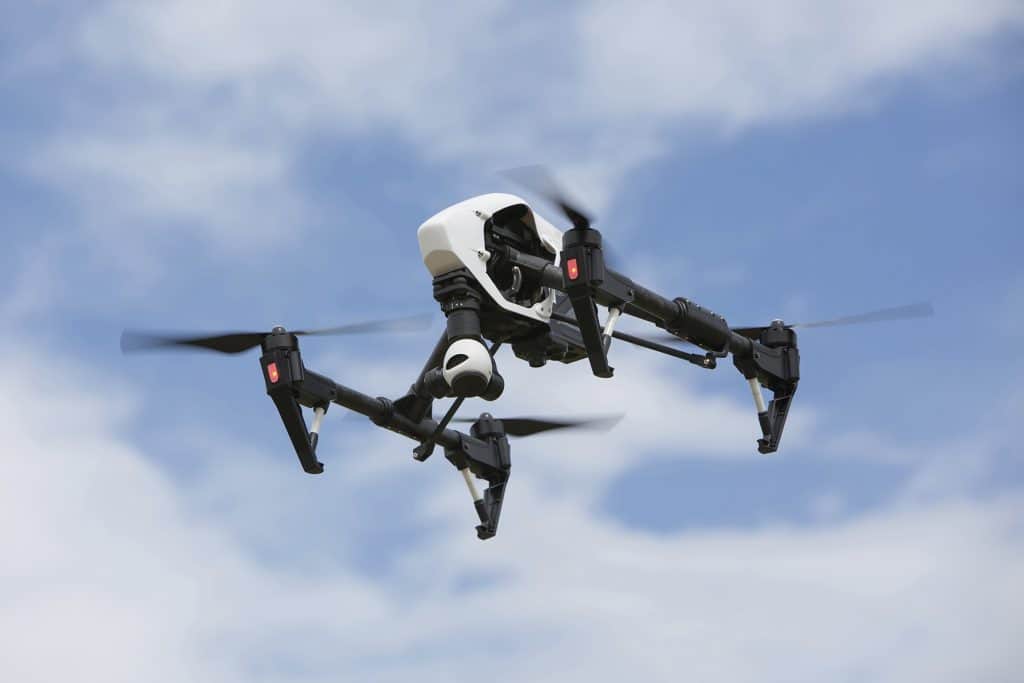At UAVAIR we hear this a fair bit: “How can you have a certificate III course? Flying drones is easy, my 14 year old can fly like an expert”. While this is true to a certain extent, flying Unmanned Aerial Vehicles (UAV) commercially is a much more challenging process and one that requires a significant amount of training, practice and talent to get right. Let’s take a look at a day in the life of a UAV Operator:
On the road to a UAV job
It’s 4am and the alarm sounds, you eat a quick breakfast, check the weather forecast and hit the road. You got to bed late last night while you checked and rechecked your tools of the trade. A DJI S900 is carefully packed in the back of your car with spare propellers and batteries, along with your UHD camera, Transmitter, Aeronautical Radio, tool kit and laptop. You have a 250km drive to the filming location, a new Australian movie set in the Australian bush. Along the way you pick up your colleague, also a qualified pilot and your number two during the flight. Operating the camera gimbal via a separate transmitter. You’ve worked together extensively for the last 2 years and you share an ability to communicate almost silently together on the job.
The work didn’t start last night however, you’ve both been working on this project for months. You’ve met with the filmmakers, tendered for the job and won it, then you’ve had to assess the location and determine the specific job requirements. In this case the film location is a waterhole which happens to be within 5 kilometres of an airfield, so you’ve had to to apply for an exemption from CASA as well as provide the film company with insurance and qualification details.
The filmmakers have made the job sound pretty simple, fly over the waterhole and film as the lead actress jumps into the waterhole. It sounds simple but experience tells you it rarely is.
You’ve won this job because you are saving the film crew a fortune, their only alternative was to rig up a wire over the scene and use a pulley to bring the camera across. This is how you win a lot of work, you demonstrate to companies how much you can save them time and money instead of using traditional image capture techniques, this week alone you will be mapping a section of coastline for some scientists and assessing the integrity of a timber bridge, once you’ve completed this job that is.
Flight location
As you get to the location you notice there are people buzzing everywhere, you immediately start assessing the risks in your mind as well as scouting out your best vantage point to stand. You check in with your contact at the site office and both you and your camera operator start preparing your airframe and camera. Weighing in at 8 kilos this airframe whilst not your heaviest or most expensive rig carries some weight and you need to be 100% confident it will fly safely and reliably.
You check the intended flight path for the shoot and notice that the location scout has failed to provide a safe 30 metre distance from the actress, after negotiations with the crew you establish the only other reliable path is through a narrow gap between two trees. You can fly through it, but you are going to have to concentrate on the shot at the same time.
You prepare your Aeronautical radio and advise any air traffic of your presence. You get the notice that everything is ready and the actress is in place, you lock the battery in place on the airframe, connect the transmitter and throttle the machine on. It gently lifts the camera into the air, you retract the landing gear and check your display to ensure all systems are running as normal. So far so good.
As you gently drift towards the waterhole, you line up the gap between the trees and keep an eye on your screen. Years of practice makes this all work perfectly as you adjust the yaw and pitch of the airframe while your operator holds the camera on the actress. If you get this shot wrong, the actress will have to go back into her trailer and dry her hair for the shot again, It sounds trivial but the time delay will cost the film crew tens of thousands of dollars.
You drift along your line of flight looking for potential risks and making sure the camera operator is in the best position to film, and then the shots done but your job isn’t over. That 15 seconds of footage is worth everything to your company and you need that airframe back on the ground. You guide it back through the trees, drop your landing gear and settle it gently back to earth.
The results
The director quickly checks the footage and you get a big thumbs up, that 15 seconds of footage took months of preparation to win the job and execute it perfectly. There is a good chance they’ll be calling you again soon.
While flying a Parrot Drone around your backyard might seem easy, using a UAV professionally requires a whole new level of skill and understanding of flight principles, technology and the legalities of commercial flight operations as well as a good head for business.
At UAVAIR a Certificate III in Aviation (Remote Pilot) means a lot more than just understanding how to fly without crashing. We spend the time training you on Aircraft operations as well as the legal, safety and professional aspects of UAV Operation. Our free information sessions allow you to meet professional pilots in the industry and get a better understanding of what’s involved.


